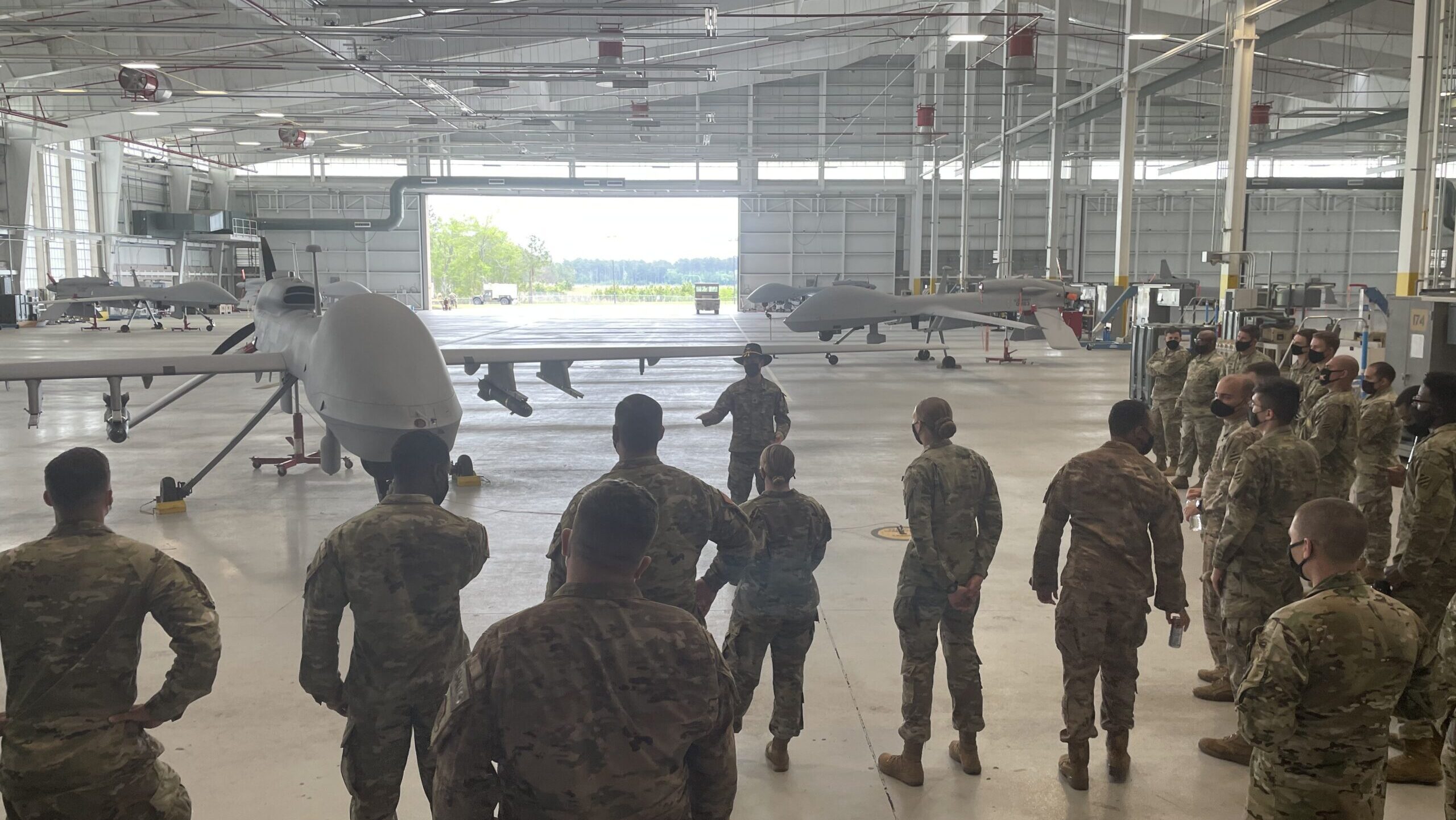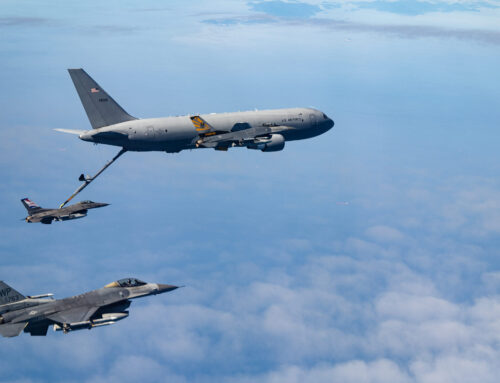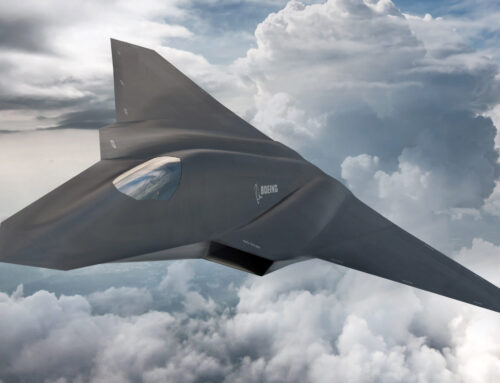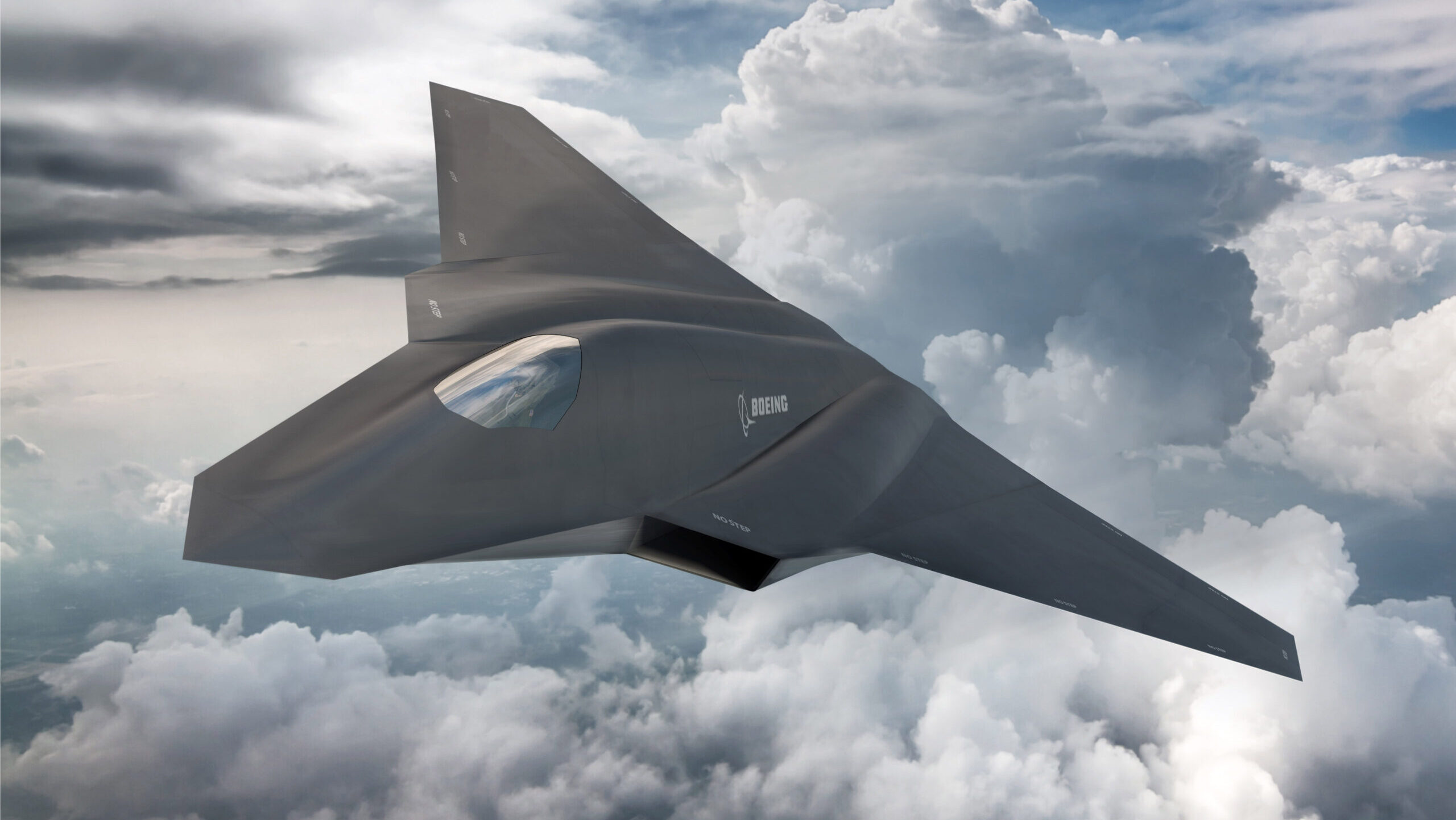Military intelligence soldiers assigned to 2nd Armored Brigade Combat Team, 3rd Infantry Division, observe a Grey Eagle demonstration from soldiers assigned to 3rd Combat Aviation Brigade, 3rd ID April 16, 2021 at Evan Army Airfield, Ga. (US Army/Maj. Justin Howard)
WASHINGTON — As the US Army examines its options for operating larger drones for surveillance and attack missions in remote locations, it is hoping to nail down an acquisition plan over the next year, according to three service leaders.
In early June the Army released a request of information for a group 4 or 5 unmanned aircraft system (UAS) — meaning drones weighing more than 1,320 pounds. The service is keenly interested in platforms that can fly 500 nautical miles at 20,000 feet up in the air with multiple payloads, and that are capable of short takeoff and landing (STOL).
“This is to determine what the market and what technology has evolved over the past several years. We’ve been watching the space very closely” Brig. Gen. David Phillips, the program executive officer for aviation, told Breaking Defense Wednesday.
RELATED: Army wants ideas for new large drone for reconnaissance and attack missions
More than 10 responses came in as a result of that early summer solicitation, and the service has begun consolidating the replies, according to Col. Joshua Ruisanchez, the director of the Aviation Capability Development and Integration Directorate. Ruisanchez said he anticipates receiving that analysis around the October timeframe, at which point the Army will begin the process of assembling various options for senior leaders.
The service currently operates the MQ-1C Gray Eagle, but Ruisanchez and Col Nick Ryan, the director for the Army Capability Manager-Unmanned Aircraft Systems, said they are interested in improvements to that drone, as well as other options on the market suitable for soldiers at the corps and division levels.
“In our mind, the corps level needs extended sensing and should probably have an extended-range UAS,” Ruisanchez said. “At the division level, they probably need to jump a lot, not operating from sanctuary, so they probably need something that’s vertical, or the short takeoff and landing, on unimproved terrain. So, we’re looking at a formation-type construct for the future.”
So, is this a Grey Eagle replacement? “Absolutely not,” Ryan said. It’s about examining what the right mix of drones should be at each echelon and based on different theaters, and could potentially lead to a mix of options.
“Is one [drone] better suited to one theater? One better suited to another theater?” Ryan asked. “Those are the options we’re looking at. It’s really analyzing what’s out there.”
Once that initial analysis is complete, it will head up the chain for senior leaders to examine, potentially leading to a final requirements document by the beginning of fiscal 2026.
“We’ll inform senior leaders of the capabilities that are there and then we’ll ask the question of what type of technologies do we want, based on what has been identified? Do we pursue forward within the Gray Eagle or something different?” Ruisanchez said. Part of that calculation, of course, will involve the price tag, and moving away from the Gray Eagle, he added, may cost more or lead to additional airworthiness release work.
As for General Atomics, spokesman C. Mark Brinkley said the company is all in for a potential competition and ready to offer options.
“We were excited to see the RFI, and happy to respond with details and plans for our Gray Eagle 25M and Gray Eagle STOL aircraft,” Brinkley wrote in a statement to Breaking Defense Thursday. “General Atomics envisions Gray Eagle 25M and Gray Eagle STOL as a true 1-2 punch for Army aviation moving into the future.”
The Gray Eagle 25M, or the Mojave demonstrator, acted as a “proof of concept” to test capabilities that can be incorporated in future products and shares common DNA with the extended-range version of the Gray Eagle, adding short takeoff and landing capability and the ability to carry a maximum payload of 16 Hellfire missiles — double that of the baseline MQ-1C. First flight of GE 25M occurred in December 2023.
The Gray Eagle STOL is designed to build off the 25M work and allow more flexibility for operating in austere environments.
It’s unclear what other firms have responded to the RFI, but the list is likely to include traditional primes as well as drone-focused startups ready to bid if a competition is launched.











